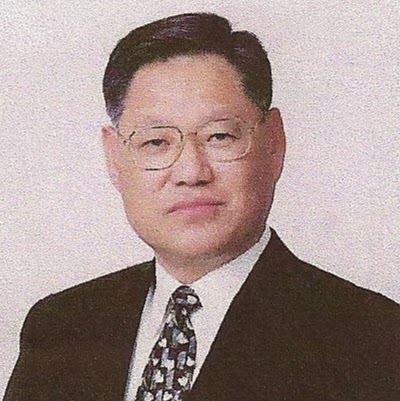Kyung Hwa Lee
age ~58
from Sparks, NV
- Also known as:
-
- Kyung H Lee
- Kuung H Lee
- Kyung H Illee
- Bo Lee
- Lee K Hwa
- Lee Ju
- Hwa Kyung
Kyung Lee Phones & Addresses
- Sparks, NV
- Reno, NV
- Irving, TX
- Arlington, TX
- Salt Lake City, UT
- Dallas, GA
- Scottsdale, AZ
Resumes

Kyung Lee Dallas, TX
view sourceWork:
The University of Texas at Dallas
Richardson, TX
Sep 2006 to Jan 2012
Graduate Research and Teaching Assistant Korean Student Association
Dallas, TX
Aug 2009 to Aug 2010
Vice President Korea Institute of Science and Technology
Seoul, KR
Sep 2004 to Jul 2006 Korea Institute of Science and Technology
Seoul, KR
Sep 2002 to Aug 2004
Richardson, TX
Sep 2006 to Jan 2012
Graduate Research and Teaching Assistant Korean Student Association
Dallas, TX
Aug 2009 to Aug 2010
Vice President Korea Institute of Science and Technology
Seoul, KR
Sep 2004 to Jul 2006 Korea Institute of Science and Technology
Seoul, KR
Sep 2002 to Aug 2004
Education:
The University of Texas at Dallas
Dallas, TX
Aug 2006 to May 2012
Ph.D in Department of Electrical Engineering KOREA University
Sep 2002 to Aug 2004
MS in Materials Science and Engineering Chonbuk National University
Mar 1994 to Feb 1998
BS in Metallurgical Engineering
Dallas, TX
Aug 2006 to May 2012
Ph.D in Department of Electrical Engineering KOREA University
Sep 2002 to Aug 2004
MS in Materials Science and Engineering Chonbuk National University
Mar 1994 to Feb 1998
BS in Metallurgical Engineering
Medicine Doctors

Kyung J Lee, Fort Worth TX - FNP (Family Nurse Practitioner)
view sourceSpecialties:
Nursing (Nurse Practitioner)
Address:
923 Pennsylvania Ave Suite 100, Fort Worth, TX 76104
8179200484 (Phone), 8179200068 (Fax)
8179200484 (Phone), 8179200068 (Fax)
Languages:
English

Kyung M. Lee
view sourceSpecialties:
Family Medicine
Work:
Atlantic Medical GroupWest Parkway Medical
230 W Pkwy STE 10, Pompton Plains, NJ 07444
9738350800 (phone), 9736162766 (fax)
230 W Pkwy STE 10, Pompton Plains, NJ 07444
9738350800 (phone), 9736162766 (fax)
Languages:
English
Spanish
Spanish
Description:
Ms. Lee works in Pompton Plains, NJ and specializes in Family Medicine. Ms. Lee is affiliated with Chilton Medical Center.

Kyung Woon Lee
view sourceSpecialties:
Family Medicine
Work:
Southwest Georgia Health CareCochran Medical Center
148 E Peacock St, Cochran, GA 31014
4789344988 (phone), 4789344989 (fax)
148 E Peacock St, Cochran, GA 31014
4789344988 (phone), 4789344989 (fax)
Languages:
English
Description:
Mr. Lee works in Cochran, GA and specializes in Family Medicine. Mr. Lee is affiliated with Houston Medical Center.

Kyung J. Lee
view sourceSpecialties:
Otolaryngology
Work:
Texas Health Care PLLCTexas Health Care
923 Pennsylvania Ave STE 100, Fort Worth, TX 76104
8179200484 (phone), 8179200068 (fax)
923 Pennsylvania Ave STE 100, Fort Worth, TX 76104
8179200484 (phone), 8179200068 (fax)
Languages:
English
Spanish
Spanish
Description:
Ms. Lee works in Fort Worth, TX and specializes in Otolaryngology. Ms. Lee is affiliated with Baylor All Saints Medical Center, Baylor Surgical Hospital Fort Worth, John Peter Smith Health Network and Texas Health Harris Methodist Hospital Fort Worth.

Kyung Ryul Lee
view sourceSpecialties:
General Practice
Internal Medicine
Cardiology
Internal Medicine
Cardiology
Education:
The University of Texas Southwestern (1989)

Kyung Joon Lee
view sourceSpecialties:
Physical Medicine & Rehabilitation
Neuromusculoskeletal Medicine, Sports Medicine
Anatomic Pathology
Neuromusculoskeletal Medicine, Sports Medicine
Anatomic Pathology
Education:
Yonsei University (1968)

Kyung Hui Kang Lee
view sourceSpecialties:
Psychiatry
Child & Adolescent Psychiatry
Child & Adolescent Psychiatry
Education:
Ewha Womans University (1972)
License Records
Kyung Joon Lee
License #:
23534 - Active
Issued Date:
Dec 31, 2004
Renew Date:
Dec 1, 2015
Expiration Date:
Nov 30, 2017
Type:
Certified Public Accountant
Kyung Hee Lee
License #:
1201131242
Category:
Cosmetologist License
Kyung M Lee
License #:
1201112848
Category:
Cosmetologist License
Kyung Jae Lee
License #:
2705134321
Category:
Contractor
Kyung Yun Lee
License #:
MT000668T - Expired
Category:
Medicine
Type:
Graduate Medical Trainee
Us Patents
-
Tuning Of Fe Catalysts For Growth Of Spin-Capable Carbon Nanotubes
view source -
US Patent:8409768, Apr 2, 2013
-
Filed:Oct 12, 2010
-
Appl. No.:12/902392
-
Inventors:Jae Hak Kim - Plano TX, US
Gil Sik Lee - Lewisville TX, US
Kyung Hwan Lee - Dallas TX, US
Lawrence J. Overzet - Richardson TX, US -
Assignee:Board of Regents, The University of Texas Systems - Austin TX
-
International Classification:B82Y 30/00
B82Y 40/00
C01B 31/02
D01F 9/127 -
US Classification:429528, 977755, 977742, 427113, 4234472, 4234473, 429532, 4292318
-
Abstract:Growing spin-capable multi-walled carbon nanotube (MWCNT) forests in a repeatable fashion will become possible through understanding the critical factors affecting the forest growth. Here we show that the spinning capability depends on the alignment of adjacent MWCNTs in the forest which in turn results from the synergistic combination of a high areal density of MWCNTs and short distance between the MWCNTs. This can be realized by starting with both the proper Fe nanoparticle size and density which strongly depend on the sheet resistance of the catalyst film. Simple measurement of the sheet resistance can allow one to reliably predict the growth of spin-capable forests. The properties of pulled MWCNTs sheets reflect that there is a relationship between their electrical resistance and optical transmittance. Overlaying either 3, 5, or 10 sheets pulled out from a single forest produces much more repeatable characteristics.
-
Method Of Manufacturing Electrodes Using Carbon Nanotube Sheets
view source -
US Patent:20130224371, Aug 29, 2013
-
Filed:Apr 1, 2013
-
Appl. No.:13/854747
-
Inventors:Jae Hak Kim - Plano TX, US
Gil Sik Lee - Lewisville TX, US
Kyung Hwan Lee - Dallas TX, US
Lawrence J. Overzet - Richardson TX, US -
Assignee:THE BOARD OF REGENTS OF THE UNIVERSITY OF TEXAS SYSTEM - Austin TX
-
International Classification:H01M 4/04
H01M 4/88 -
US Classification:427115, 4271263, 4271266, 205159, 977742
-
Abstract:Growing spin-capable multi-walled carbon nanotube (MWCNT) forests in a repeatable fashion will become possible through understanding the critical factors affecting the forest growth. Here we show that the spinning capability depends on the alignment of adjacent MWCNTs in the forest which in turn results from the synergistic combination of a high areal density of MWCNTs and short distance between the MWCNTs. This can be realized by starting with both the proper Fe nanoparticle size and density which strongly depend on the sheet resistance of the catalyst film. Simple measurement of the sheet resistance can allow one to reliably predict the growth of spin-capable forests. The properties of pulled MWCNTs sheets reflect that there is a relationship between their electrical resistance and optical transmittance. Overlaying either 3, 5, or 10 sheets pulled out from a single forest produces much more repeatable characteristics.
Lawyers & Attorneys

Kyung Cheon Lee - Lawyer
view sourceLicenses:
New York - Currently registered 2006
Education:
University of Minnesota Law School

Kyung Jin Lee - Lawyer
view sourceAddress:
Kdb Bank
Licenses:
Wisconsin - Good Standing 2010
Education:
University of Wisconsin
Graduated - 2010
Graduated - 2010
Languages:
English

Kyung Yoon Lee - Lawyer
view sourceAddress:
Kim & Chang
237031181x (Office)
237031181x (Office)
Licenses:
New York - Currently registered 2006
Education:
Stanford Law School

Kyung Don Lee - Lawyer
view sourceAddress:
Shin & Kim
8223161677 (Office)
8223161677 (Office)
Licenses:
New York - Currently registered 2000
Education:
Columbia

Kyung Hwan Lee - Lawyer
view sourceAddress:
The Export-Import Bank of Korea
Licenses:
New York - Currently registered 1998
Education:
Cornell
Name / Title
Company / Classification
Phones & Addresses
Owner
In Friendly Drive
Ret Groceries Eating Place
Ret Groceries Eating Place
5433 S Lamar St, Dallas, TX 75215
2144282541
2144282541
Owner
Aristocrat Cleaners
Drycleaning Plant
Drycleaning Plant
7690 Redwood Rd, Taylorsville, UT 84084
8012557372
8012557372
President
NORTHSTAR CROSSING GP, LLC
Nonclassifiable Establishments · Business Services at Non-Commercial Site
Nonclassifiable Establishments · Business Services at Non-Commercial Site
2109 Raintree Dr, Irving, TX 75063
2548 Royal Ln, Dallas, TX 75229
11447 Harry Hines Blvd, Dallas, TX 75229
2548 Royal Ln, Dallas, TX 75229
11447 Harry Hines Blvd, Dallas, TX 75229
President
SUNJAY INVESTMENT LIMITED COMPANY
11536 Harry Hines Blvd STE 215, Dallas, TX 75229
11421 Denton Dr, Dallas, TX 75229
2109 Riantree, Irving, TX 75063
11421 Denton Dr, Dallas, TX 75229
2109 Riantree, Irving, TX 75063
President
JSLEE INVESTMENTS, INC
2109 Raintree Dr, Irving, TX 75063
Director, President
TEAM TAEKWONDO, LLC
Amusement/Recreation Services
Amusement/Recreation Services
6712 Mason Dr, McKinney, TX 75070
15922 Eldorado Pkwy, Frisco, TX 75035
15922 Eldorado Pkwy, Frisco, TX 75035
Director
GRACE COMMUNITY CHURCH OF PLANO, INC
4501 Hedgcoxe Rd, Plano, TX 75024
Principal
Gae Gin Go
Cotton Ginning Services
Cotton Ginning Services
2780 Royal Ln, Dallas, TX 75229
Myspace

Kyung Ah Lee
view sourceBirthday:
1953

Kyung Ah Lee
view sourceBirthday:
1953
Flickr
Classmates

Roosevelt High School, Ho...
view sourceGraduates:
Dennis Ah Yo (1968-1969),
Melvin Minakami (1955-1958),
Nam Kyung Lee (1996-1998),
Anthoney Lowry (1987-1991)
Melvin Minakami (1955-1958),
Nam Kyung Lee (1996-1998),
Anthoney Lowry (1987-1991)
Googleplus

Kyung Lee
Education:
University of Southern California - Piano Performance

Kyung Lee
Work:
Spinwave Photography - Owner/Photographer (2005)

Kyung Lee
Work:
Montgomery County, MD Government

Kyung Lee

Kyung Lee

Kyung Lee

Kyung Lee

Kyung Lee

Kyung Ah Lee
view source
Kyung Ah Lee
view sourceFriends:
Sarah Williams, Choon Mi Kwak, Said Saleh, Heejin Woo, Helmy Bayasud

Lovely Kyung Ah Lee
view sourceFriends:
Qian Song, Sumin Go, Madeleine Valk, Nicholas Knibbe, Lyndal Jolly

Lee Kyung Ah
view sourceFriends:
Isaac Lee, Max Woo-lim Park, Eun Ah Lee, Alice Liu

Kal Kyung Ah Lee
view source
Karen Kyung Ah Lee
view sourceNews

Scientists discovered a new molecule that kills even the deadliest cancer
view source- omprehensive Cancer Center at UT Southwestern Medical Center, as well as Dr. Ratna Vadlamudi, professor of obstetrics and gynecology at UT Health San Antonio. Dr. Tae-Kyung Lee, a former UTD research scientist in Ahn's Bio-Organic/Medicinal Chemistry Lab, was also involved in synthesizing the compound.
- Date: Jun 10, 2022
- Category: Health
- Source: Google

Infinitesimal Odds: A Scientist Finds Her Child's Rare Illness Stems From the Gene She Studies
view source- Why is she suffering so much? her mother, Soo-Kyung Lee, anguished. Brain scans, genetic tests and neurological exams yielded no answers. But when an email popped up suggesting that Yuna might have a mutation on a gene called FOXG1, Soo-Kyung froze.
- Date: Apr 23, 2018
- Category: Health
- Source: Google
Get Report for Kyung Hwa Lee from Sparks, NV, age ~58







